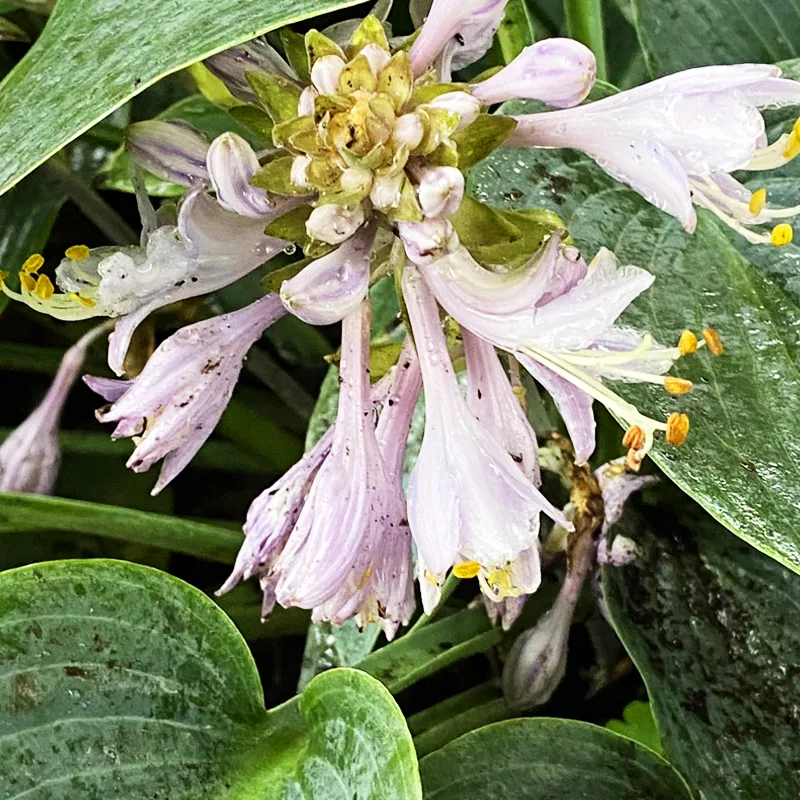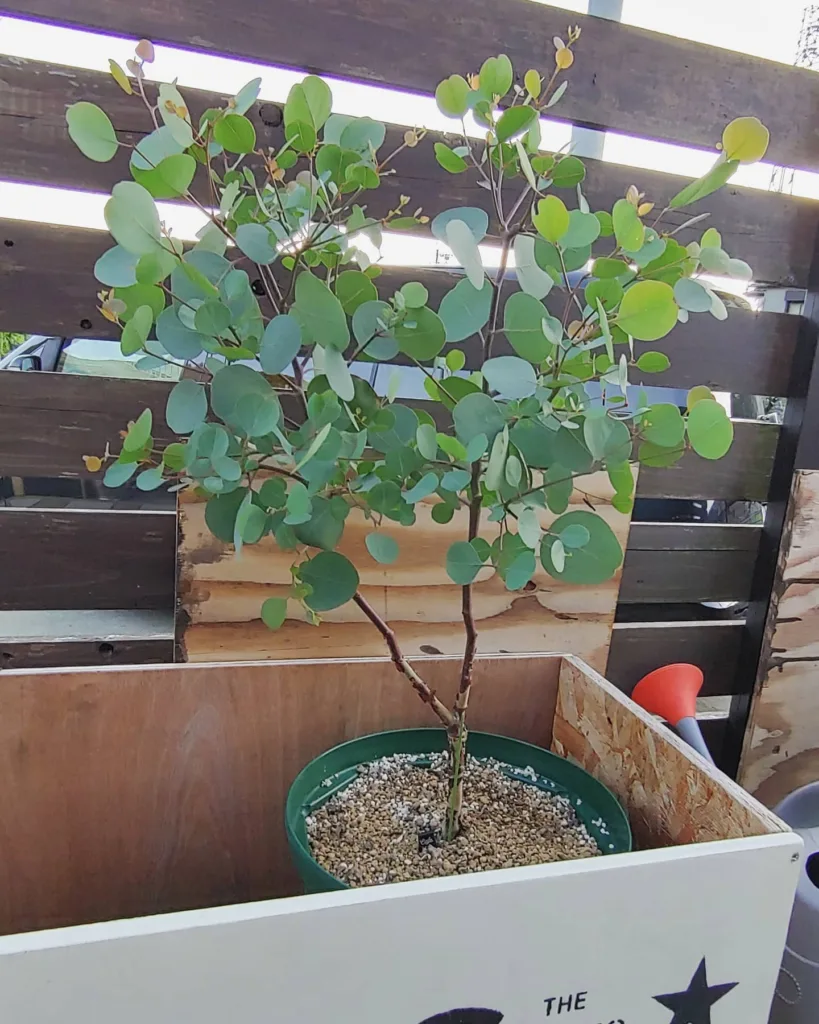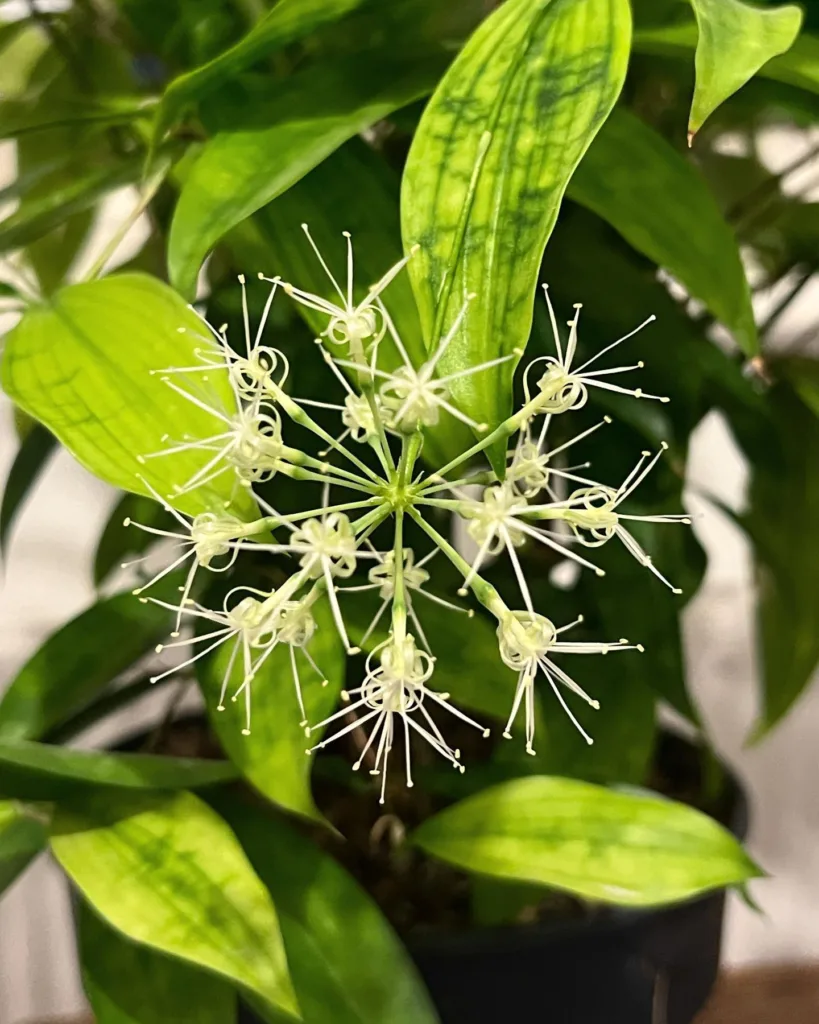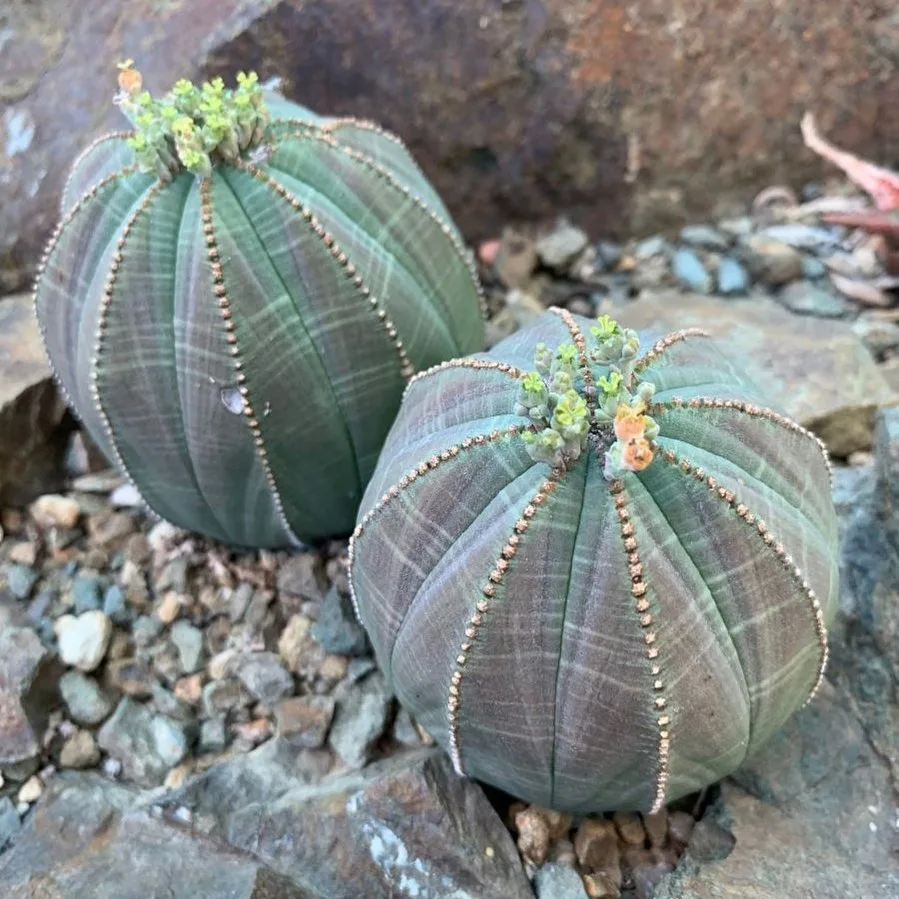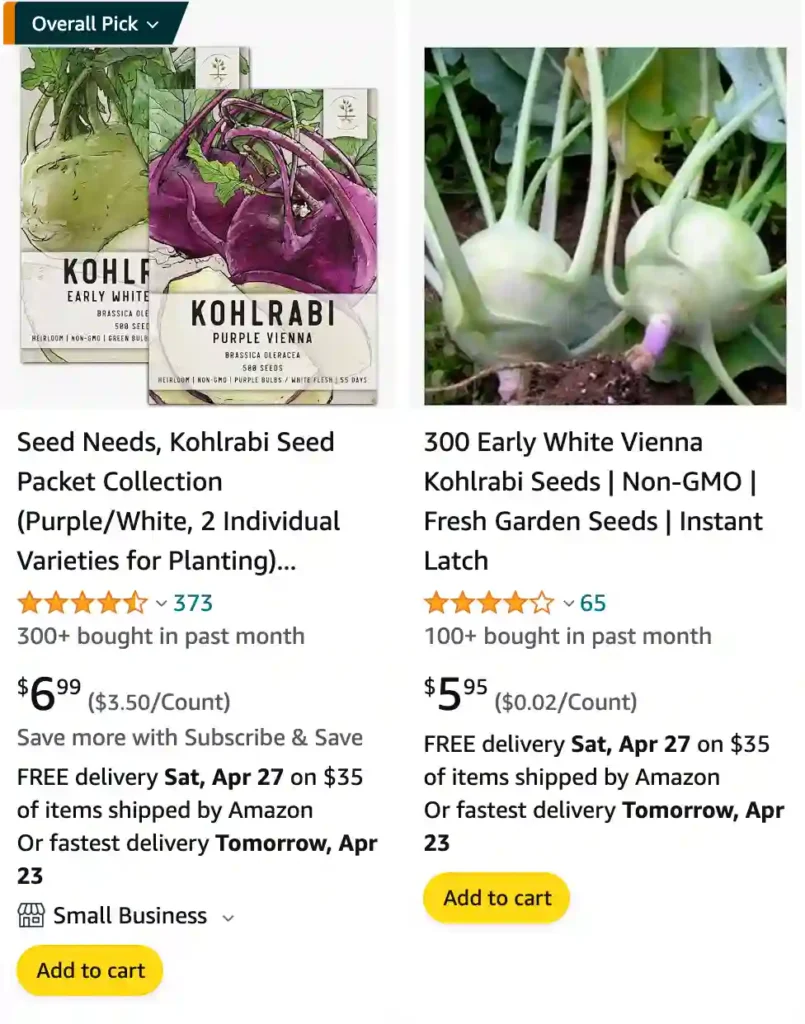
What is kohlrabi?
Kohlrabi is this interesting vegetable I discovered a while back, and it quickly became one of my favorites to grow in my garden. It’s like a funky-looking cousin of the cabbage and turnip, with a bulbous stem that grows above the ground. I remember the first time I harvested it; I was intrigued by its alien-like appearance with its thick stems and pale green or purple skin. The taste is unique too, with a mild, slightly sweet flavor that’s reminiscent of cabbage or broccoli stems. I’ve enjoyed incorporating kohlrabi into salads, slaws, stir-fries, and even roasting it with other vegetables. It’s versatile and adds a delightful crunch to dishes, making it a staple in my garden and kitchen.
How to cook kohlrabi?
Cooking kohlrabi is quite simple and versatile, and I’ve experimented with various methods in my kitchen. One of my favorite ways to prepare it is by roasting it. First, I peel the tough outer skin of the kohlrabi and then cut it into cubes or slices. Then, I toss the kohlrabi pieces with olive oil, salt, and pepper, along with any other desired seasonings like garlic powder or thyme. I spread them out on a baking sheet in a single layer and roast them in a preheated oven at around 400°F (200°C) for about 25-30 minutes, or until they’re tender and golden brown, flipping halfway through. Roasting brings out the natural sweetness of kohlrabi and gives it a delicious caramelized flavor. Alternatively, I’ve also enjoyed kohlrabi grated raw into salads or slaws for a refreshing crunch. Overall, whether roasted, sautéed, steamed, or eaten raw, kohlrabi is a versatile and tasty addition to any meal.
What does kohlrabi taste like?
Yes, you can eat kohlrabi leaves! They’re actually quite nutritious and can be used in a variety of dishes. I’ve enjoyed using them in salads, stir-fries, soups, and even as a substitute for other leafy greens like kale or collard greens. Kohlrabi leaves have a slightly peppery flavor and a tender texture, similar to other leafy greens. However, they can be a bit tougher than more delicate greens, so I usually prefer to cook them rather than eating them raw. Overall, using the leaves of kohlrabi is a great way to reduce food waste and add extra nutrients to your meals.
How to cut kohlrabi?
Cutting kohlrabi is quite straightforward once you get the hang of it. First, I start by rinsing the kohlrabi under cold water to remove any dirt or debris. Then, I use a sharp knife to trim off the tough, woody stems and remove any remaining leaves if I plan to use them separately. Next, I peel away the tough outer skin using a vegetable peeler or a knife, revealing the crisp, juicy flesh underneath. Once peeled, I usually slice the kohlrabi into rounds or wedges for roasting, grating for salads, or cutting into cubes for stir-fries or soups. The key is to cut it into pieces that are manageable for your desired recipe, ensuring even cooking and optimal flavor. Overall, with a little practice, cutting kohlrabi becomes second nature, and it opens up a world of culinary possibilities!
How to store kohlrabi?
Storing kohlrabi properly can help prolong its freshness and preserve its flavor. After harvesting or purchasing kohlrabi, I usually start by removing any excess dirt and trimming the leaves, leaving about an inch of stem attached to the bulb. Then, I store it in the crisper drawer of the refrigerator, preferably in a perforated plastic bag to maintain moisture levels while allowing for airflow. Whole kohlrabi can last for up to 2-3 weeks when stored this way. If I’ve already peeled or cut the kohlrabi, I store it in an airtight container or resealable plastic bag in the refrigerator, where it should last for about 3-4 days. I’ve also heard of some people blanching and freezing kohlrabi for longer-term storage, but I usually prefer to enjoy it fresh whenever possible for the best taste and texture. Overall, storing kohlrabi properly helps to keep it crisp and flavorful for as long as possible.
Can dogs eat kohlrabi?
While kohlrabi itself isn’t inherently toxic to dogs, it’s not typically recommended as a regular part of their diet. Some dogs might enjoy the taste and texture of kohlrabi, but it’s essential to feed it to them in moderation and ensure that it’s prepared plain without any added seasonings or oils. However, because kohlrabi is a cruciferous vegetable, it can sometimes cause digestive upset in dogs if consumed in large quantities or if they have a sensitive stomach. Additionally, the tough texture of raw kohlrabi could pose a choking hazard for some dogs, so it’s best to cook or steam it before offering it to them. As always, it’s a good idea to consult with a veterinarian before introducing any new foods to your dog’s diet to ensure it’s safe for them to eat.
Where to buy kohlrabi?
You can typically find kohlrabi at well-stocked grocery stores, specialty food markets, and farmers’ markets, particularly during its peak season in the late spring and early summer months. I’ve had success finding kohlrabi in the produce section of larger supermarkets, where it’s often displayed alongside other root vegetables like carrots and turnips. Additionally, local farmers’ markets are a great place to find fresh, locally grown kohlrabi, and you might even discover different varieties or colors that you wouldn’t find in a typical grocery store. If you’re having trouble finding kohlrabi locally, you can also consider checking online grocery delivery services or specialty produce suppliers that may offer it for purchase. Overall, kohlrabi is becoming increasingly popular and more widely available, so keep an eye out for it during your next grocery shopping trip!
Can chickens eat kohlrabi?
Yes, chickens can eat kohlrabi, and it can be a nutritious addition to their diet when offered in moderation. Kohlrabi is safe for chickens to consume, both the bulbous stem and the leaves. However, as with introducing any new food to their diet, it’s essential to introduce kohlrabi gradually and monitor how your chickens react to it. Some chickens may enjoy pecking at kohlrabi directly from the garden, while others may prefer it chopped into smaller pieces or cooked. Additionally, ensure that the kohlrabi is free from any pesticides or chemicals before offering it to your chickens. Overall, kohlrabi can be a healthy treat for chickens, providing them with additional nutrients and variety in their diet.
Can bearded dragons eat kohlrabi?
Bearded dragons can eat kohlrabi, but it should be offered to them in moderation and as part of a varied diet. Kohlrabi is safe for bearded dragons to consume, and it can provide them with additional nutrients and variety. However, it’s essential to prepare the kohlrabi properly before offering it to your bearded dragon. Remove any tough outer skin and chop the kohlrabi into small, manageable pieces to prevent choking hazards. Additionally, bearded dragons may prefer cooked or steamed kohlrabi over raw, as it can be easier for them to digest. As always, it’s essential to monitor your bearded dragon’s reaction to any new food and ensure that they’re eating a balanced diet that meets their nutritional needs.
Can rabbits eat kohlrabi?
Yes, rabbits can eat kohlrabi, and it can be a healthy addition to their diet when offered in moderation. Kohlrabi is safe for rabbits to consume, both the bulbous stem and the leaves. It provides rabbits with additional nutrients and variety in their diet. However, as with introducing any new food to their diet, it’s important to introduce kohlrabi gradually and monitor how your rabbits react to it. Some rabbits may enjoy nibbling on kohlrabi directly from the garden, while others may prefer it chopped into smaller pieces. Ensure that the kohlrabi is fresh and free from any pesticides or chemicals before offering it to your rabbits. Overall, kohlrabi can be a nutritious treat for rabbits when given in appropriate quantities alongside their regular hay, pellets, and fresh vegetables.
Can you can kohlrabi?
Yes, you can preserve kohlrabi by canning it, although it’s not as common as preserving other vegetables like tomatoes or cucumbers. Kohlrabi can be canned using a pressure canner, as it is a low-acid vegetable and requires the high temperatures reached in a pressure canner to ensure safety. To can kohlrabi, start by peeling and cutting it into cubes or slices. Then, pack the prepared kohlrabi into sterilized jars, leaving appropriate headspace. Add boiling water or a brine solution to the jars, ensuring that the kohlrabi is fully submerged. Process the jars in a pressure canner according to the recommended guidelines for your altitude and the size of the jars. After processing, allow the jars to cool, and check for a proper seal before storing them in a cool, dark place. Canned kohlrabi can be used in various dishes like soups, stews, and casseroles, providing a convenient way to enjoy this versatile vegetable year-round.
How do you pronounce kohlrabi?
The word “kohlrabi” is pronounced as “KOLE-rah-bee.” The emphasis is on the first syllable, “KOLE,” followed by “rah” and then “bee.” It’s a German word, with “kohl” meaning cabbage and “rabi” meaning turnip, so when you say it, you’re essentially saying “cabbage turnip” in German.
How many kohlrabi per plant?
The number of kohlrabi you can expect per plant can vary depending on factors such as the variety of kohlrabi, growing conditions, and how well the plant is cared for. Generally, you can expect to harvest one to two kohlrabi bulbs per plant. However, some varieties may produce more, especially if they are given ample space to grow and are provided with optimal growing conditions, such as nutrient-rich soil, adequate water, and plenty of sunlight. Additionally, harvesting the kohlrabi when they are still young and tender can encourage the plant to produce additional side shoots, resulting in multiple smaller bulbs per plant. Overall, proper care and attention to the needs of the kohlrabi plants can help maximize the yield per plant.
How to grow kohlrabi from seed?
Growing kohlrabi from seed is relatively straightforward and can be a rewarding experience. Here’s a general guide on how to grow kohlrabi from seed:
Choose the right time: Kohlrabi is a cool-season crop, so it’s best to plant the seeds in early spring or late summer for a fall harvest. Make sure the soil temperature is around 45-85°F (7-29°C) for optimal germination.
Prepare the soil: Kohlrabi grows best in well-draining, fertile soil with a pH level of 6.0-7.5. Work some compost or well-rotted manure into the soil to improve its texture and fertility.
Plant the seeds: Sow the kohlrabi seeds directly into the garden bed, spacing them about 4-6 inches apart in rows spaced 12-18 inches apart. Plant the seeds 1/4 to 1/2 inch deep and cover them lightly with soil. Water the seeds gently to keep the soil moist but not waterlogged.
Provide proper care: Keep the soil consistently moist throughout the germination period, which typically takes 5-10 days. Once the seedlings emerge, thin them to ensure proper spacing, leaving the strongest seedlings to grow. Kohlrabi prefers full sun but can tolerate partial shade.
Fertilize and water: Fertilize the kohlrabi plants with a balanced fertilizer or compost tea every 3-4 weeks to promote healthy growth. Water the plants regularly, especially during dry periods, to keep the soil evenly moist.
Harvest: Kohlrabi is typically ready for harvest about 6-8 weeks after planting, when the bulbs are about 2-3 inches in diameter. Harvest the bulbs by cutting them off at the base of the stem using a sharp knife. Be sure to harvest them before they become too large and woody.
By following these steps and providing proper care, you can successfully grow kohlrabi from seed and enjoy a bountiful harvest of this tasty and nutritious vegetable.
How to tell if kohlrabi is bad?
To determine if kohlrabi is bad, look for signs of spoilage or deterioration. Here are some indicators that kohlrabi may be past its prime:
Appearance: Check the outer skin of the kohlrabi for any mold, discoloration, or soft spots. Spoiled kohlrabi may appear discolored, mushy, or have visible signs of mold growth.
Texture: Gently squeeze the kohlrabi to assess its texture. Fresh kohlrabi should feel firm and solid, while spoiled kohlrabi may feel soft, mushy, or spongy.
Smell: Take a whiff of the kohlrabi to detect any off-putting odors. Spoiled kohlrabi may emit a foul or unpleasant smell, indicating bacterial or fungal growth.
Taste: If you’re unsure about the quality of the kohlrabi, you can take a small taste to assess its flavor. Spoiled kohlrabi may taste sour, bitter, or off-flavor compared to fresh kohlrabi.
If you notice any of these signs, it’s best to discard the kohlrabi to avoid the risk of foodborne illness. Additionally, proper storage practices, such as keeping kohlrabi refrigerated and using it within a few weeks of purchase, can help prolong its freshness and minimize the risk of spoilage.
Is kohlrabi keto?
Yes, kohlrabi can be considered keto-friendly as it is relatively low in carbohydrates and high in fiber. A 100-gram serving of raw kohlrabi contains about 6 grams of carbohydrates, with around 3.6 grams of net carbs once you subtract the fiber content. This makes kohlrabi a suitable option for those following a ketogenic diet, which typically restricts carbohydrate intake to induce a state of ketosis. Additionally, kohlrabi is a nutritious vegetable that provides essential vitamins and minerals while being low in calories, making it a valuable addition to a keto meal plan.
When to start kohlrabi seeds indoors?
You can start kohlrabi seeds indoors about 4-6 weeks before the last expected frost date in your area. This timing allows the seedlings to establish themselves indoors and gives them a head start before transplanting them outdoors once the weather has warmed up sufficiently. When starting kohlrabi seeds indoors, use seed-starting trays or pots filled with seed-starting mix, and sow the seeds about 1/4 to 1/2 inch deep. Keep the soil consistently moist and provide adequate light, such as a sunny windowsill or grow lights. Once the seedlings have developed a few true leaves and the danger of frost has passed, usually around mid to late spring, you can transplant them into the garden. By starting kohlrabi seeds indoors, you can extend the growing season and ensure a successful harvest.
Can guinea pigs eat kohlrabi?
Yes, guinea pigs can eat kohlrabi, and it can be a healthy addition to their diet when given in moderation. Kohlrabi is safe for guinea pigs to consume, both the bulbous stem and the leaves. It provides guinea pigs with additional nutrients and variety in their diet. However, as with introducing any new food to their diet, it’s important to introduce kohlrabi gradually and monitor how your guinea pigs react to it. Some guinea pigs may enjoy nibbling on kohlrabi directly from the garden, while others may prefer it chopped into smaller pieces. Ensure that the kohlrabi is fresh and free from any pesticides or chemicals before offering it to your guinea pigs. Overall, kohlrabi can be a nutritious treat for guinea pigs when given in appropriate quantities alongside their regular hay, pellets, and fresh vegetables.
Can you grill kohlrabi?
Yes, you can grill kohlrabi, and it makes for a delicious and flavorful dish! Grilling kohlrabi enhances its natural sweetness and adds a smoky flavor that pairs well with a variety of seasonings.
Can you pickle kohlrabi?
Yes, you can pickle kohlrabi, and it’s a tasty way to preserve this versatile vegetable and enjoy it in different dishes.
How do you know when kohlrabi is ready to harvest?
You can tell when kohlrabi is ready to harvest by observing its size, color, and texture. Here are some indicators to look for:
Size: Kohlrabi bulbs are typically ready to harvest when they reach a diameter of about 2-3 inches. At this size, they are usually tender and flavorful, with a crisp texture.
Color: The skin of ripe kohlrabi bulbs is typically smooth and glossy, with a vibrant color. Depending on the variety, kohlrabi may have a pale green, light purple, or white skin when ripe. Avoid harvesting kohlrabi with discolored or blemished skin, as this may indicate that the bulb is past its prime.
Texture: Gently squeeze the kohlrabi bulb to assess its firmness. Ripe kohlrabi should feel firm and solid, with a slight give when pressed. If the bulb feels soft or spongy, it may be overripe and past its prime.
Leaves: The leaves attached to the kohlrabi bulb can also provide clues about its readiness for harvest. When the leaves begin to wilt or yellow, it’s a sign that the kohlrabi bulb is mature and ready to be harvested.
Time: Kohlrabi bulbs are typically ready for harvest about 6-8 weeks after planting the seeds. However, this timing can vary depending on factors such as the variety of kohlrabi, growing conditions, and climate.
Overall, harvesting kohlrabi at the right time ensures that you enjoy the best flavor and texture from this versatile vegetable. Be sure to check your kohlrabi regularly as it matures to ensure that you harvest it at its peak of ripeness.
Is kohlrabi low fodmap?
Yes, kohlrabi is considered low in FODMAPs (Fermentable Oligosaccharides, Disaccharides, Monosaccharides, and Polyols), making it suitable for individuals following a low FODMAP diet. FODMAPs are a group of short-chain carbohydrates that can trigger digestive symptoms in some people, particularly those with irritable bowel syndrome (IBS) or other digestive disorders. Kohlrabi contains minimal amounts of these fermentable carbohydrates, making it generally well-tolerated by individuals with sensitive digestive systems. However, as with any new food, it’s essential to monitor your individual tolerance and reactions when incorporating kohlrabi into your diet, especially if you have specific dietary restrictions or sensitivities.
Why is my kohlrabi not forming bulbs?
Several factors could contribute to kohlrabi plants not forming bulbs properly:
Planting too densely: Kohlrabi plants need space to develop bulbs properly. If they’re planted too closely together, they may compete for nutrients and space, resulting in stunted growth or irregular bulb formation. Make sure to space out your kohlrabi plants according to the recommended spacing guidelines for your variety.
Inadequate sunlight: Kohlrabi plants require full sun to thrive and develop healthy bulbs. If they’re not receiving enough sunlight, they may grow slowly or fail to form bulbs properly. Make sure to plant your kohlrabi in a location that receives at least 6-8 hours of direct sunlight per day.
Poor soil fertility: Kohlrabi plants need nutrient-rich soil to support bulb development. If the soil is lacking in essential nutrients like nitrogen, phosphorus, and potassium, the plants may struggle to form bulbs properly. Amend the soil with compost or well-rotted manure before planting to improve its fertility and provide ongoing fertilization throughout the growing season.
Inconsistent watering: Kohlrabi plants need consistent moisture to grow properly. Inconsistent watering, such as drought followed by heavy watering, can stress the plants and disrupt bulb formation. Make sure to water your kohlrabi plants regularly and evenly, keeping the soil consistently moist but not waterlogged.
Environmental stress: Environmental factors such as temperature extremes, pests, diseases, or improper planting depth can stress kohlrabi plants and affect bulb formation. Take steps to minimize stress on your plants, such as providing adequate protection from extreme temperatures, monitoring for pests and diseases, and planting at the correct depth.
By addressing these potential issues and providing optimal growing conditions for your kohlrabi plants, you can encourage healthy bulb formation and ensure a successful harvest.
If i die, water my plants!
